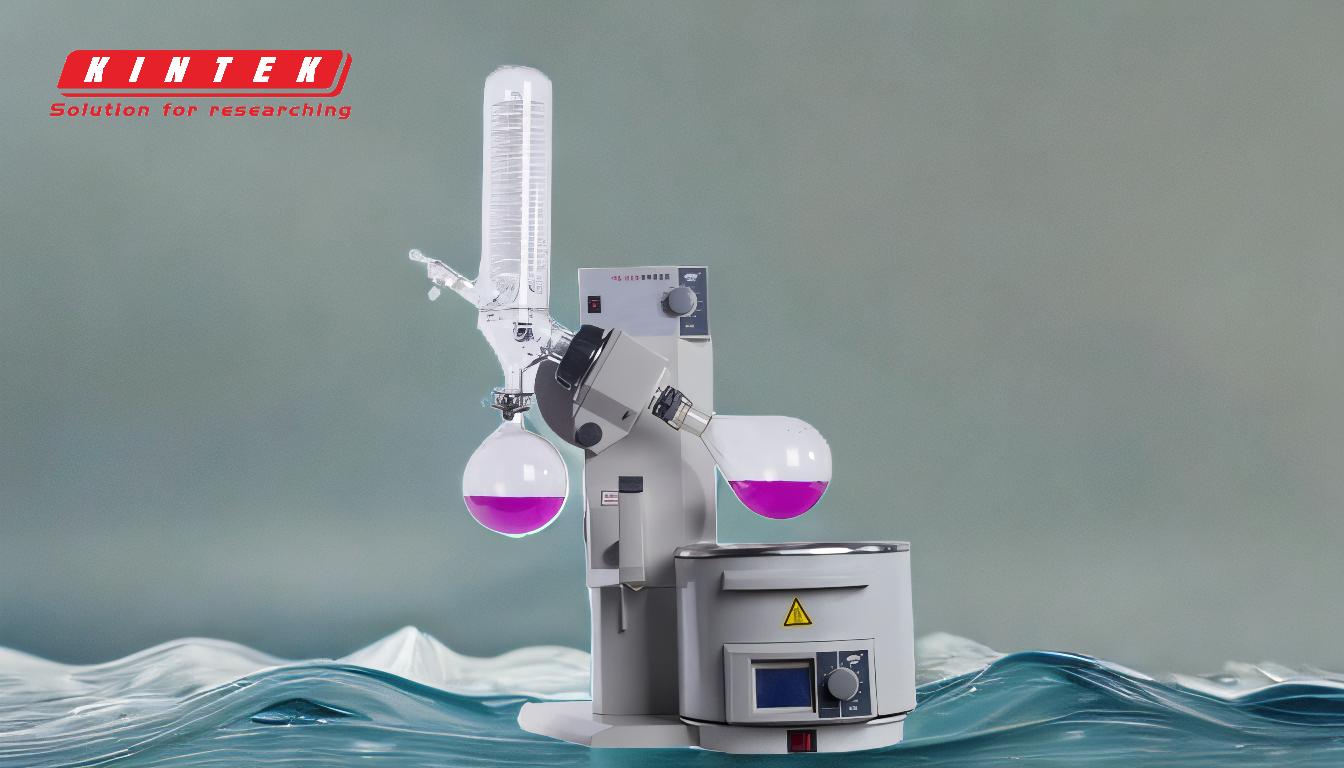The water bath in a rotary evaporator plays a crucial role in the evaporation process by providing controlled heat to the rotating flask. This heat compensates for the energy lost during solvent evaporation, ensuring the process continues efficiently without interruption. The water bath maintains an optimal temperature, preventing the sample from freezing or burning, which is essential for preserving the integrity of the sample. Additionally, for small amounts of basic solvents, heating the water bath may not be necessary, as the evaporation process can occur at ambient temperatures. Overall, the water bath is vital for maintaining consistent conditions and ensuring the effectiveness of the rotary evaporator.
Key Points Explained:

-
Provides Controlled Heat to the Rotating Flask
- The water bath supplies heat to the flask, which is essential for replacing the heat lost during the evaporation of the solvent.
- This ensures that the evaporation process continues smoothly without stopping, maintaining a steady rate of solvent removal.
-
Prevents Sample Freezing or Burning
- By maintaining an optimal temperature, the water bath prevents the solution from freezing, which could halt the evaporation process.
- It also prevents the sample from overheating, which could lead to burning or combustion, thereby preserving the integrity of the sample.
-
Maintains Consistent Temperature for Efficient Evaporation
- The water bath ensures that the temperature of the solution remains stable throughout the evaporation process.
- This consistency is critical for achieving uniform evaporation rates and avoiding fluctuations that could affect the quality of the final product.
-
Adjustable Heating for Different Solvents
- The temperature of the water bath can be adjusted based on the boiling point of the solvent being evaporated.
- For solvents with low boiling points, minimal heating may be required, while higher temperatures may be necessary for solvents with higher boiling points.
-
Not Always Necessary for Small Amounts of Basic Solvents
- In cases where only small quantities of basic solvents are being evaporated, heating the water bath may not be required.
- The evaporation process can occur at ambient temperatures, reducing energy consumption and simplifying the setup.
-
Enhances Safety and Efficiency
- The water bath acts as a safety mechanism by preventing the sample from reaching extreme temperatures that could cause hazardous reactions.
- It also improves the overall efficiency of the rotary evaporator by ensuring that the heat is evenly distributed and the process is uninterrupted.
By understanding the role of the water bath in a rotary evaporator, users can optimize the evaporation process, ensuring both safety and efficiency in their laboratory work.
Summary Table:
| Key Role | Description |
|---|---|
| Provides Controlled Heat | Supplies heat to replace energy lost during solvent evaporation. |
| Prevents Freezing or Burning | Maintains optimal temperature to protect sample integrity. |
| Ensures Consistent Temperature | Stabilizes temperature for uniform evaporation rates. |
| Adjustable Heating | Temperature can be tailored to the solvent's boiling point. |
| Optional for Small Solvent Amounts | Heating may not be needed for small quantities of basic solvents. |
| Enhances Safety and Efficiency | Prevents extreme temperatures and ensures uninterrupted evaporation. |
Optimize your rotary evaporation process—contact us today for expert advice!












